Calura
Calura is an installation that drops viewers into the feeling of hot summer days. It is based on a found archive of film photos taken in Ischia and the beaches of Naples in the mid-1980s. The photos come from rolls of film that were dropped off to be developed but never picked up again. Therefore, this collection offers a unique window into a specific place and time, taken from the perspective of multiple unknown photographers. Amidst differing photographic styles, the images convey a common mood and sensory experience of hot, slow, summer days. Heat evokes both the spirit of holidays and the lazy stickiness of being too warm to move. The sound and feeling of fans are inextricable from days like these, so fans are the interaction point for the installation. Visitors can turn the oscillation on or off to control when the images change and adjust the speed of the fans to navigate between six stations of music and sounds related to the archive’s theme.
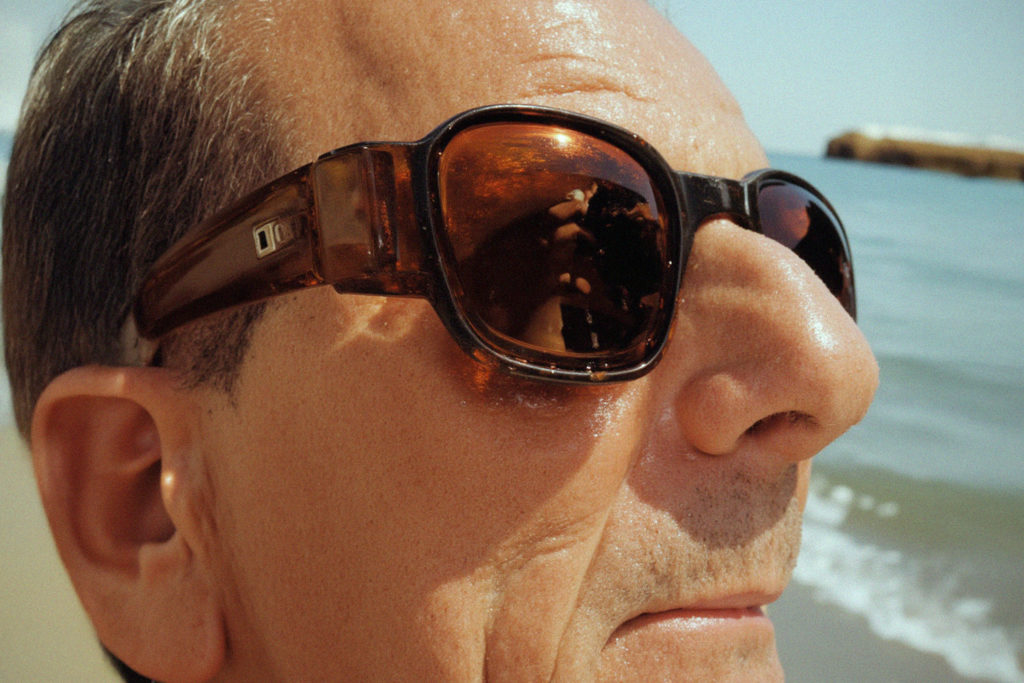
Video
Selected images
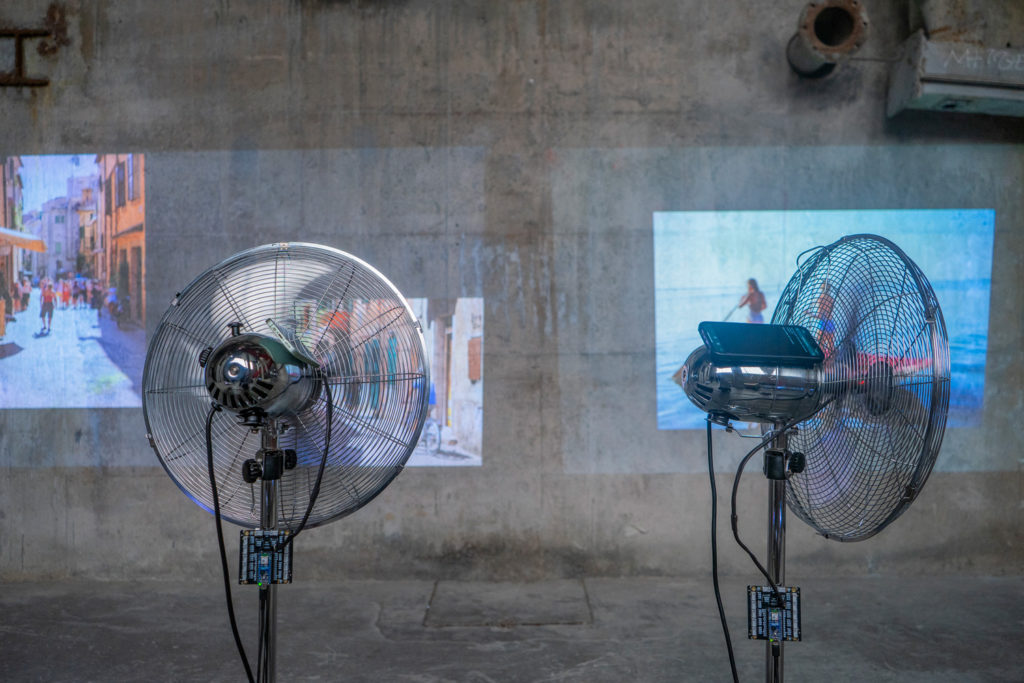
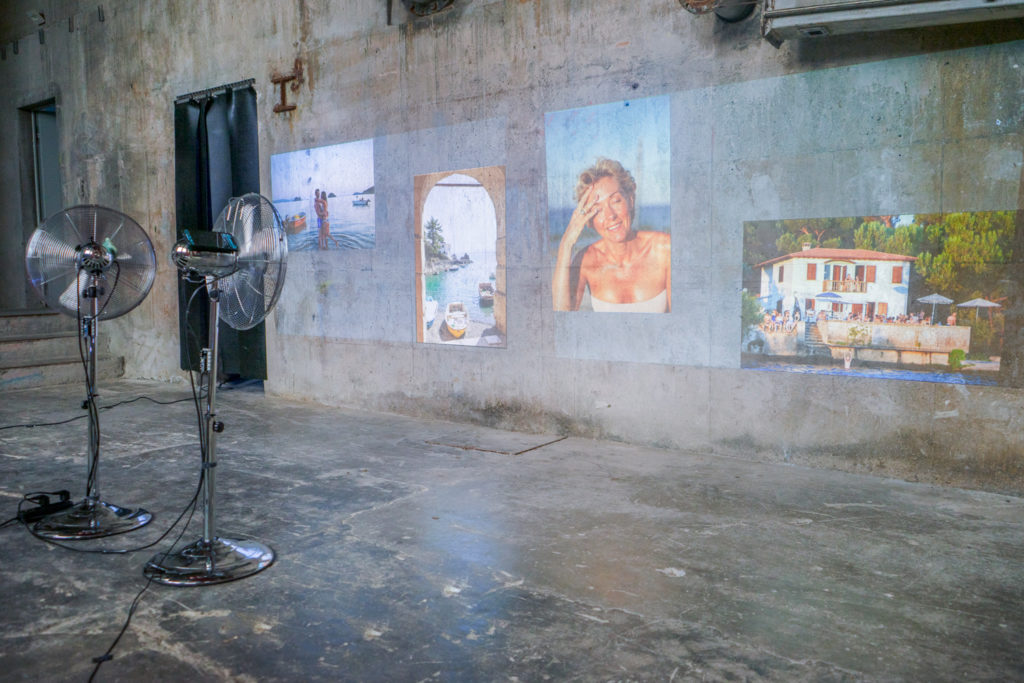

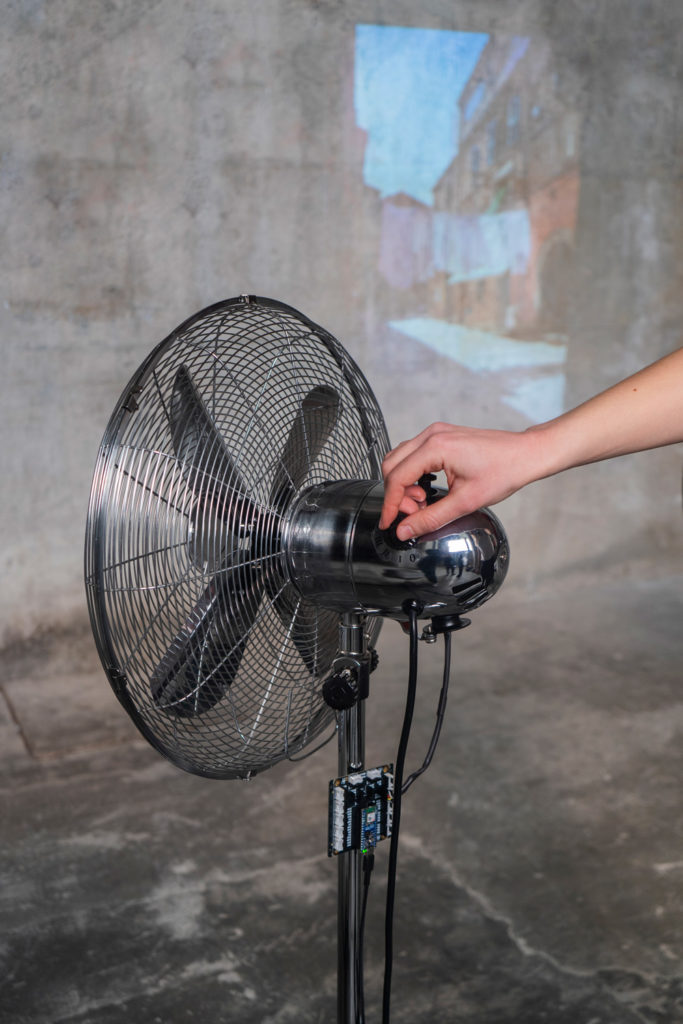
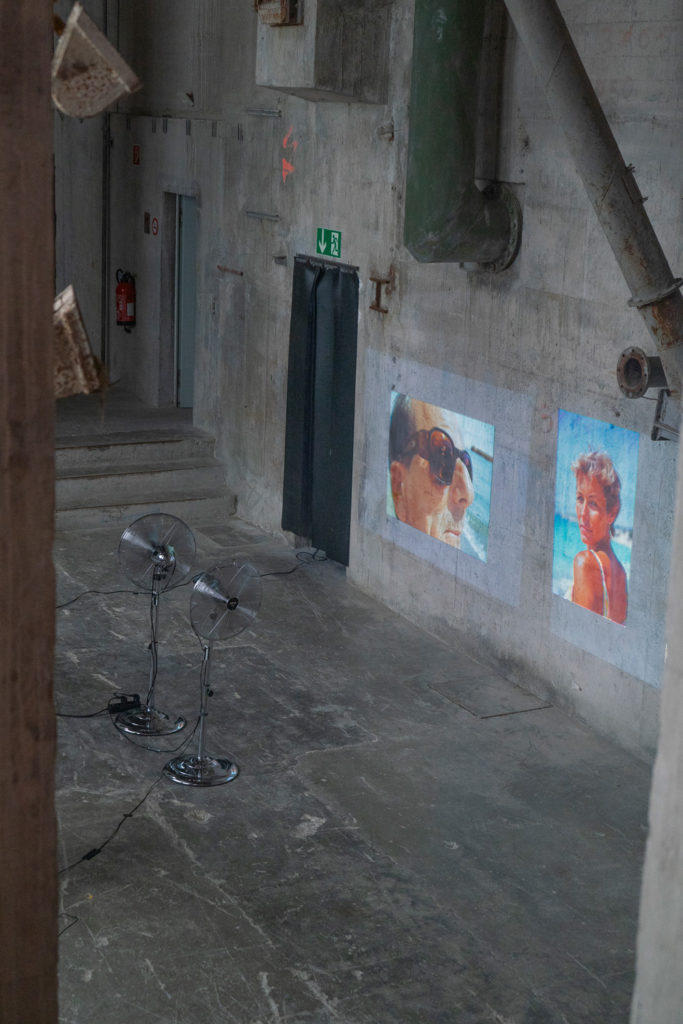
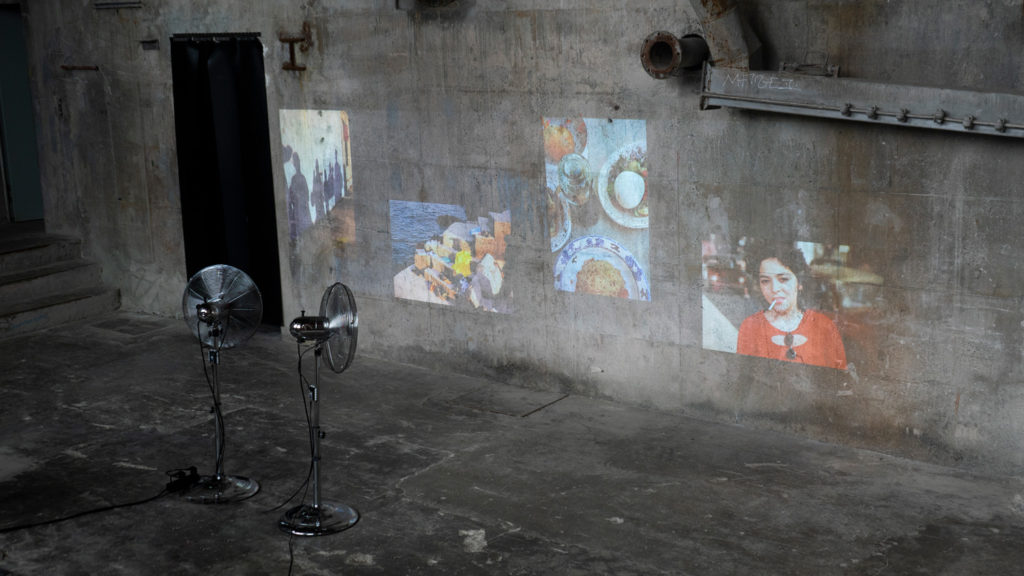
Concept
Calura is centered around the concept of viewing a single subject, in this case Ischia, from multiple perspectives. This is achieved through combining images from roles of film taken by multiple photographers in the same place over a similar period of time in the 1980s. The concept is inspired by David Hockney’s approach to photography. Hockney attempts to capture a more realistic depiction of his subjects by photographing them from many angles and arranging the photos into a collage. The Calura archive simulates this effect.
The images are generated to look like film photos in the style of Martin Parr, who is known for his full flash photography that captures the humor and vibrancy of ordinary life. Both Parr and Hockney honed the parts of their photographic styles that influence this installation in the 1980s. The Calura photos portray candid moments from time spent on the island. From the subject matter, lighting, and general mood of the collection, it’s clear that the images take place during hot summer days and nights.
The six audio stations play a mix of songs and sounds. Visitors can switch between them when changing the fan speeds. These stations, in addition to the sound of the fans themselves, convey a mood that is at once lively, imperfect, and nostalgic.
Context
This installation is part of the Designing Spacial Experiences course at SUPSI, led by Leonardo Angelucci in 2025. The brief was to generate an archive of images on a specific theme and create new modes of interaction between the archive, people, and interfaces through hacking objects. The Calura image archive and related story of the rediscovered film archive were generated based on this brief. It was exhibited in March 2025 at SACEBA in Moribo, Switzerland.
Prototyping
Idea definition
The idea for this installation started as a postcard project, with the idea of generating images and texts for vintage postcards. We explored many different regions around the world that capture imaginations, like Rio, Cairo, Istanbul, New York, Lugano, and different parts of Italy. Eventually, we decided that we wanted to tell the story of a specific place and the people there and that photography was a better medium than postcards to capture a wide range of details and multidimensional mood.
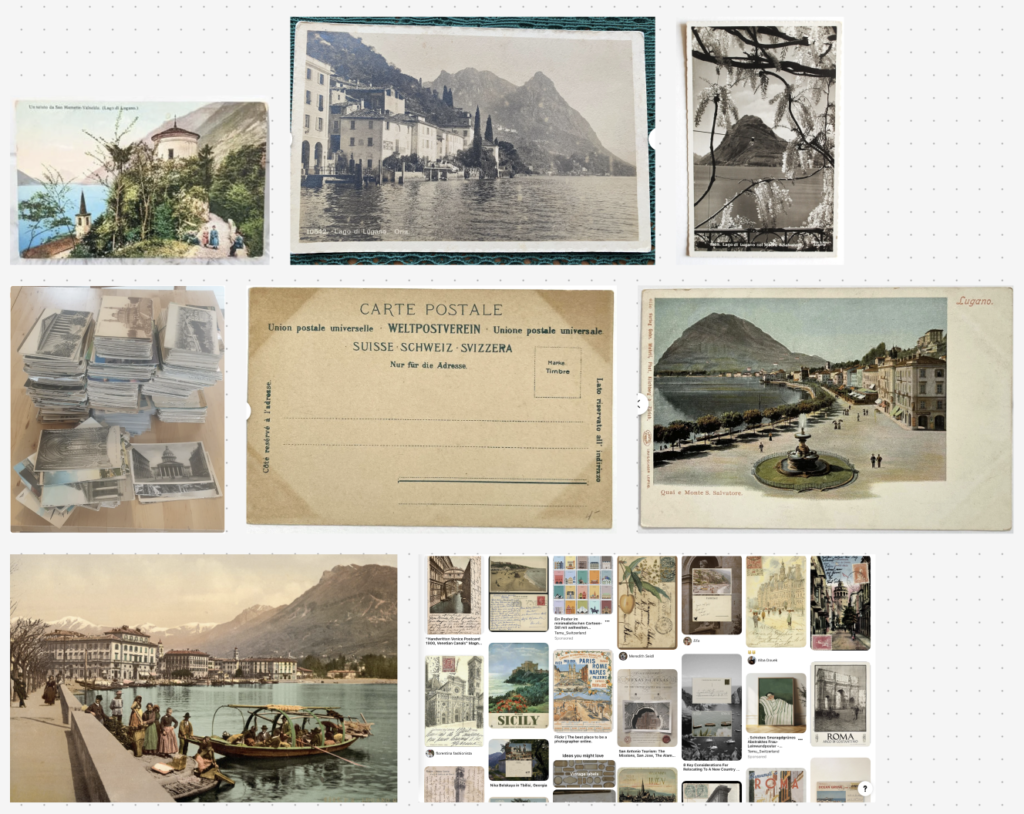
Historic postcards from Lugano, Switzerland

Mood boards from Rio and Southern Italy
Art references
David Hockney photo collages as inspiration for our archive concept:
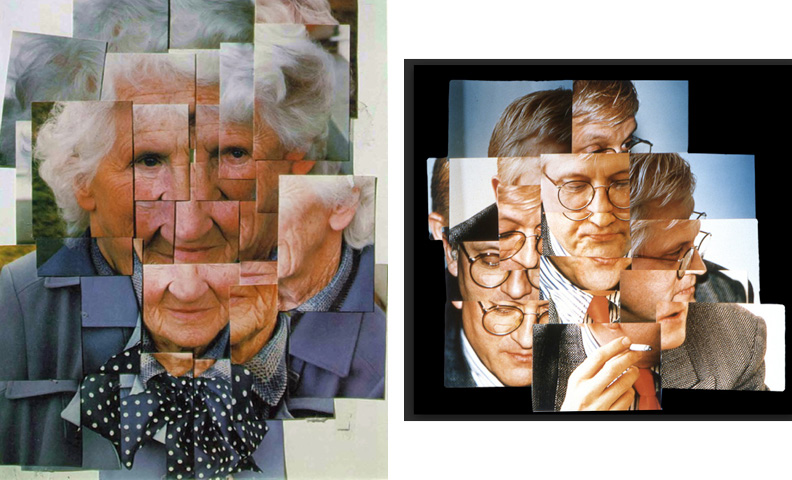
Mother I and Self Portrait (1985) by David Hockney
Martin Parr photography style reference:
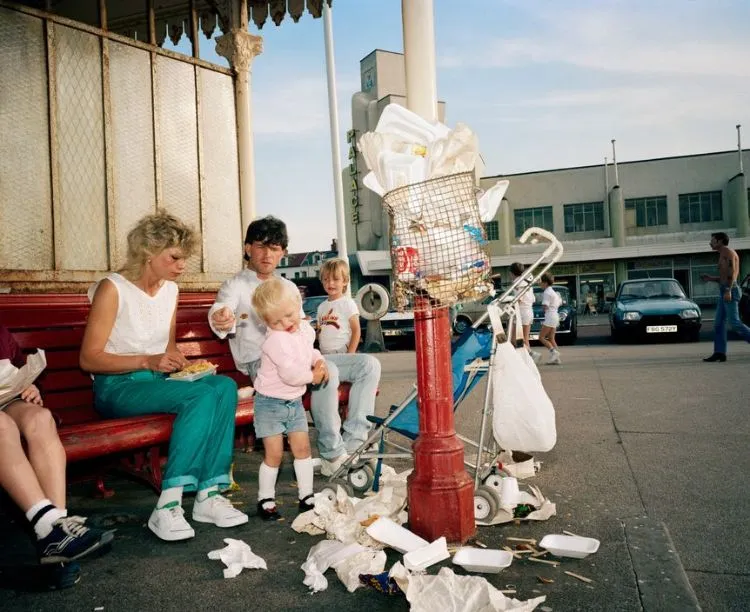
Untitled (New Brighton) (1983-85) by Martin Parr
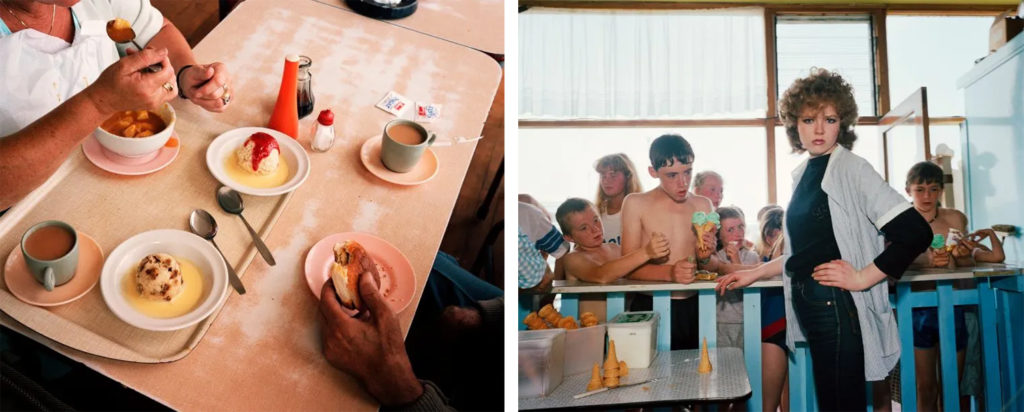
Lunch for a Couple, Ramsgate, Kent, From 'Home and Abroad' (1986) and New Brighton, From 'The Last Resort' (1983-85) by Martin Parr
Image generation
In the research phase, we built a dataset of photos that captured the style, content, and mood of the archive we wanted to develop and used these to train an AI image generation model on Replicate. After training the model, each photo was individually generated based on a text prompt that included key stylistic points, such as needing to be set in the 1980s in Naples or Ischia, Italy, be similar to the photo style of Martin Parr, on resemble 35mm film photos.
The process of generating the archive was time-consuming as we experimented with different styles of text prompts to match the content and style we were aiming to achieve. While Replicate generally does a good job producing photo-realistic images, the content is often surreal and distorted. After the image generation phase, we edited the whole collection in Photoshop to remove irregularities and give it a cohesive style that mimics the color tones and print quality of 1980s film photography.
Prompt image and text with first version image results (left) and updated text prompt and image results (right).
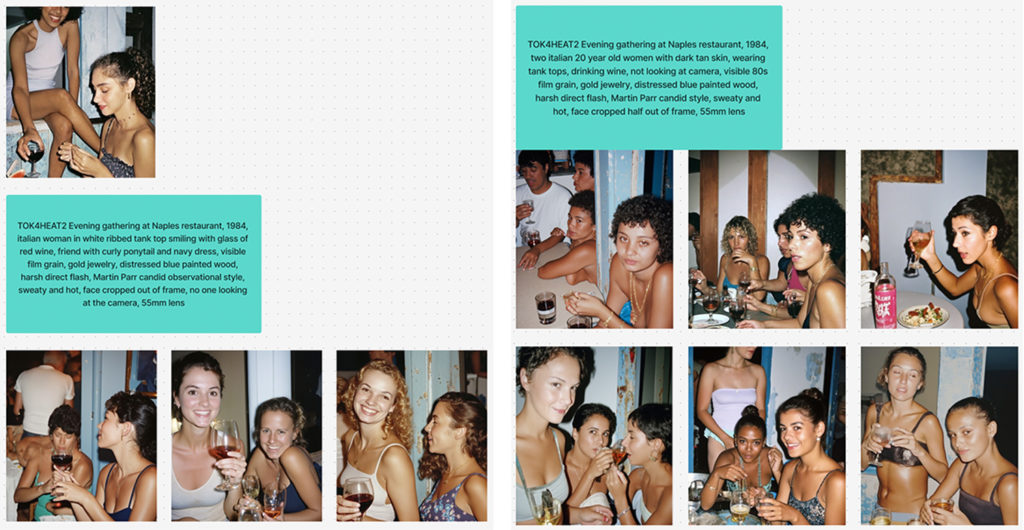
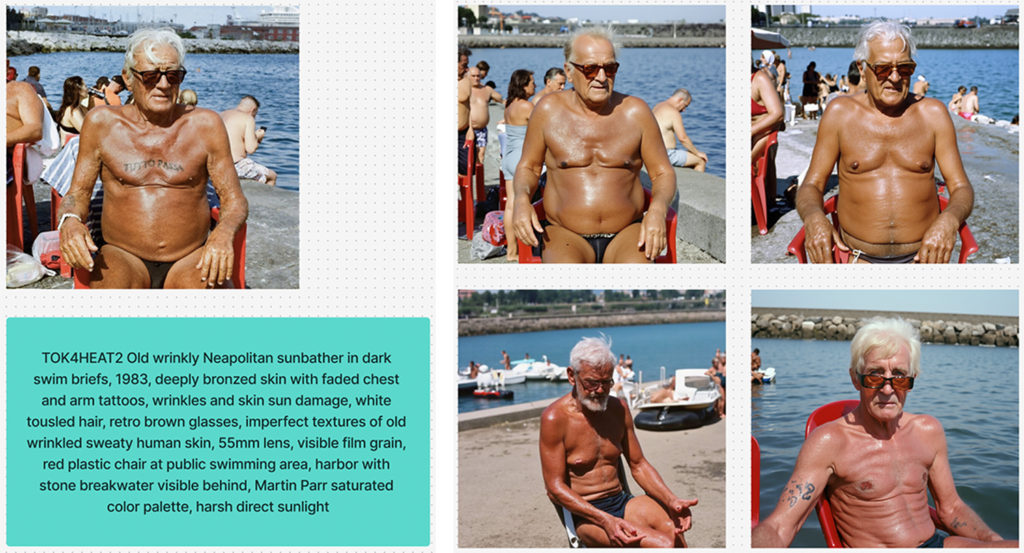
First results
Some of the outtakes with surreal imagery:
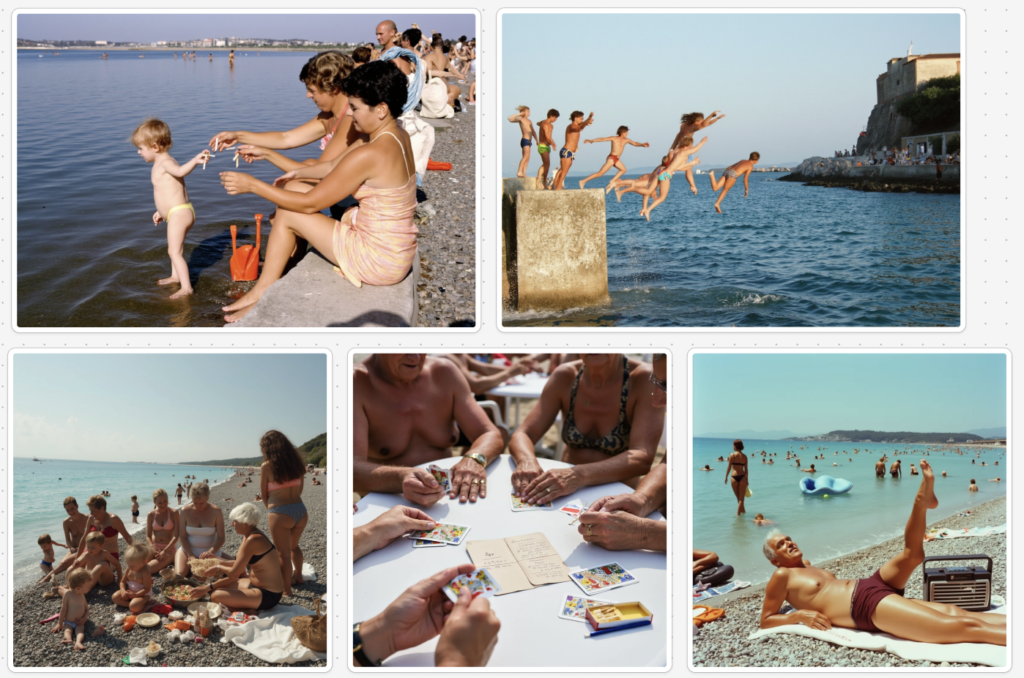
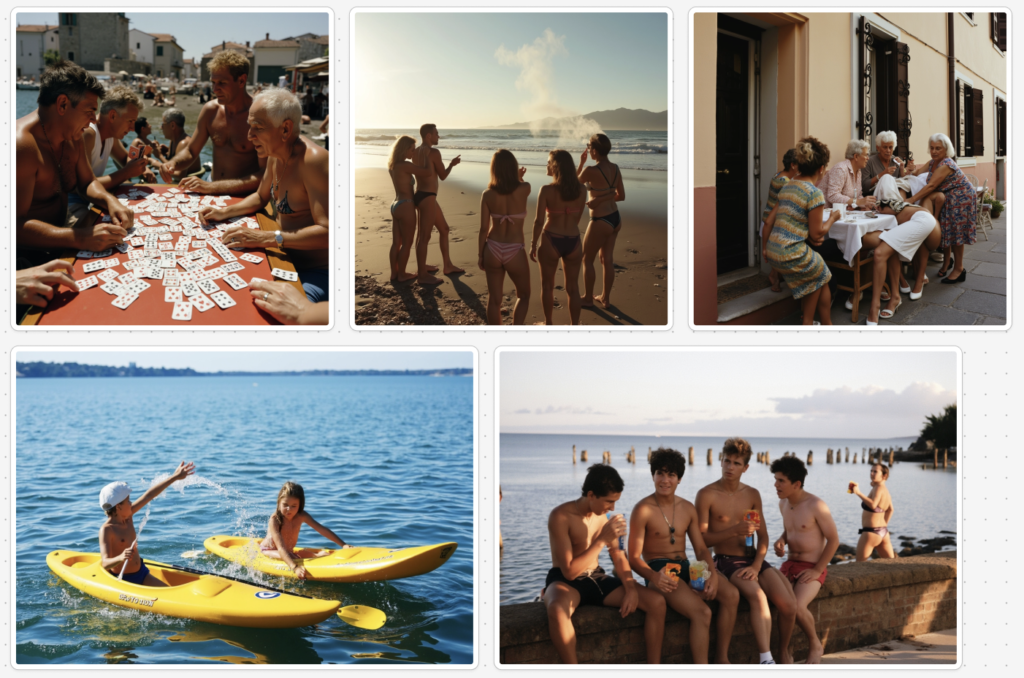

Sound selection
For sound, we looked for music from the 1980s or earlier that extended the vibe of the hot Italian afternoon images. We researched archival radio footage, classic songs from this era, and ambient sounds that reflect the content. Some stations include additional audio engineering to add static and radio transition noises. The stations are organized in ascending order, with the calmer ambient sounds of ocean waves and kids playing building up to more upbeat songs and restaurant chatter as the speed of the fans and their accompanying noise levels increase.
Each fan has three speeds, and the combined speeds of both fans trigger a station. Both fans off means no audio plays; one fan on level one plays station one; two fans on level one or one fan on level two plays station two; the scale continues through six stations.
- Station 1: Kids playing
- Station 2: Ocean waves
- Station 3: Radio 1 – Edoardo Vianello – Abbronzatissima (1963), Raffaella Carrà – Pedro (1980), Gino Paoli – Sapore di sale (1963)
- Station 4: Restaurant noises
- Station 5: Radio 2 – Al Bano & Romina Power – Felicità (1982), Umberto Tozzi – Gloria (1979), Toto Cutugno – L’italiano (1983)
- Station 6: Radio 3 – Tony Renis – Quando quando quando (1962), Ricchi E Poveri – Sara Perche Ti Amo (1981)
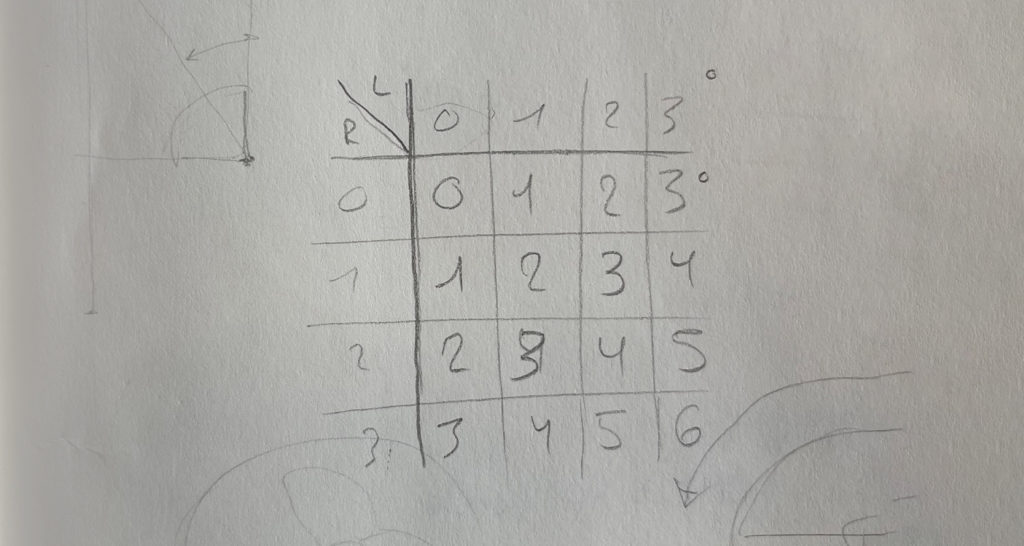
Code and compass sensor
We started experimenting with how to display the pictures by using JavaScript and drawing them on the canvas. At first, only using the mouseX movement to change the pictures that appear in the region of the mouse.
First test of image navigation
Then, using the same layout, we connected it to the phone using Supabase. This method allowed us to test the concept quickly without having to set up the Arduino and sensors. The phone mimicked the movement of the fan and triggered the change of picture on the HTML page according to the magnetic heading. We were trying to make it look like the wind made by the fan swept the pictures across the wall.
First prototype using the phone as sensor
We prototyped using the phone’s magnetic heading and a fake speed to mimic the parameter that we will use on the fans. Here, a fading effect is applied when the pictures change on the canvas based on the speed of the fan.
Navigation using the speed and the magnetic heading of the phone
We tested our prototype with the actual fan using the phone as a sensor. This helped us get a feeling for how the final exhibition might be and also to determine how quickly the images would change when triggered by the oscillation of the fan.
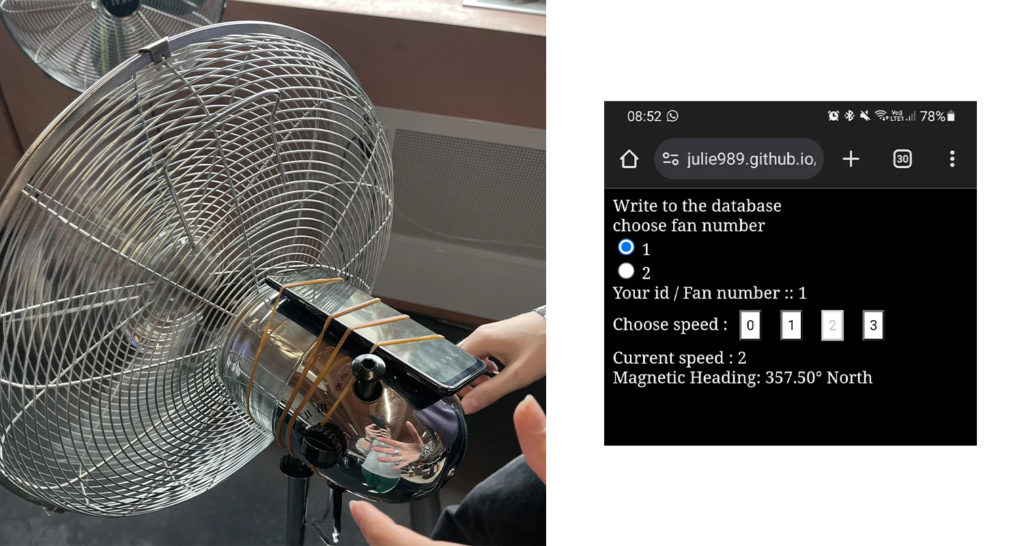
While we initially envisioned a collage of images, based on these tests, we decided to reduce the number of images in each layout to show a maximum of two images per projector at any time. This allows visitors the chance to spend more time with each image instead of being overwhelmed by a constantly changing selection.
In the final iteration, we used the compass sensors in two iPhones to change the images when the fan oscillates toward the direction of the wall. When the fan passes the compass degree that the sensor has been calibrated for, the images change, giving the impression that the breeze of the fan is blowing them away.
Next, we prototyped the installation set up by placing both fans next to each other to test the placement of the fans in relation to each other, the wall, and the two projectors.
Arduino and hall sensor
For our project, we need to measure the speed of the fan when it is set to different levels. To do this, we attached a magnet to the back of one of the blades and installed a hall sensor to track how quickly it revolves per second. The sensor notes when the speed changes and sends the result to the Supabase database.
void processHallSensor() {
hallSensorValue = digitalRead(hallSensorPin); // Read Hall sensor
// Detect falling edge (HIGH -> LOW transition)
if (hallSensorValue == LOW && hallSensorValue_old == HIGH) {
unsigned long currentTime = millis(); // Get current time
unsigned long timePerRevolution = currentTime - lastTime; // Time difference
if (lastTime > 0) {
float rps = 1000.0 / timePerRevolution;
Serial.print("Speed: ");
Serial.print(rps);
Serial.println(" RPS");
if (rps > 20) {
speedLevel = 3;
} else if (rps > 17 && rps <= 19.8) {
speedLevel = 2;
} else if (rps > 12 && rps <= 16.6) {
speedLevel = 1;
} else {
speedLevel = 0;
}
Serial.print("Speed Level: ");
Serial.println(speedLevel);
}
lastTime = currentTime; // Update lastTime
}
hallSensorValue_old = hallSensorValue; // Store current sensor state
}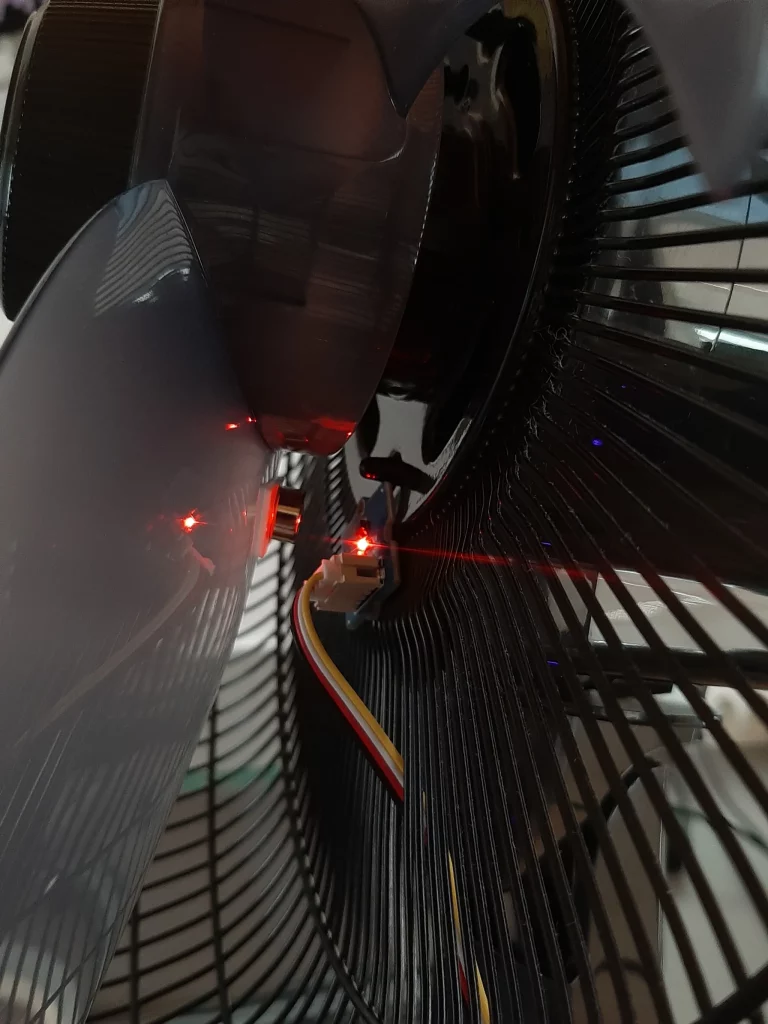
Hall sensor detecting the unique magnet
The sensor needs to be within a couple of centimeters of the magnet to detect it so we prototyped a sensor support tower out of cardboard that we later designed in Fusion and 3D-printed in PLA. We also attached additional magnets on each of the other blades to keep the weight balanced, facing them away from the sensor so only the original one triggers the revolution count.
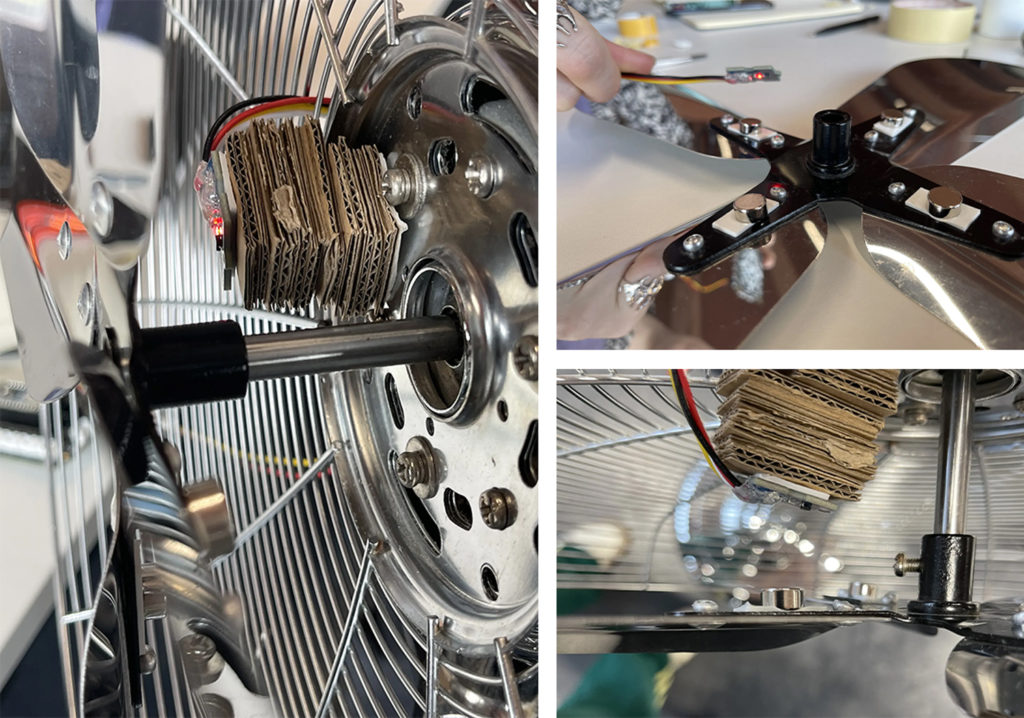
Prototype of sensor tower and magnet install
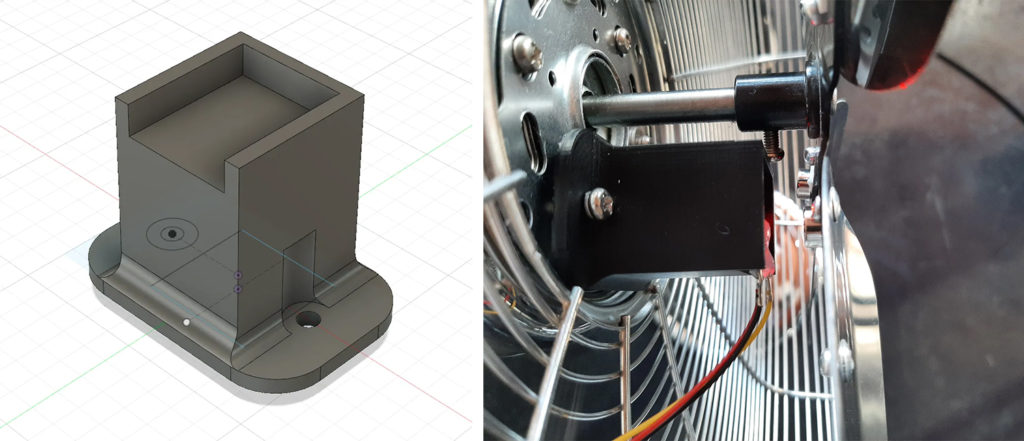
Fusion sensor tower design and final 3D print
Raspberry Pi and projector
We use two Raspberry Pis connected to projectors to display our images on the walls. One of the Raspberry Pis is connected to a speaker that plays the music stations based on the fan speeds.

Sustainability
Instead of buying new fans, we found used ones on Facebook Marketplace that fit the retro feel of our installation. This meant that they needed some cleaning and repairs. We cleaned the electrical connections, reconnected loose wires, and replaced a broken plastic plate inside one of the fans that made the change speed switch function better. We also 3D printed a small stopper to support the angle of one fan.
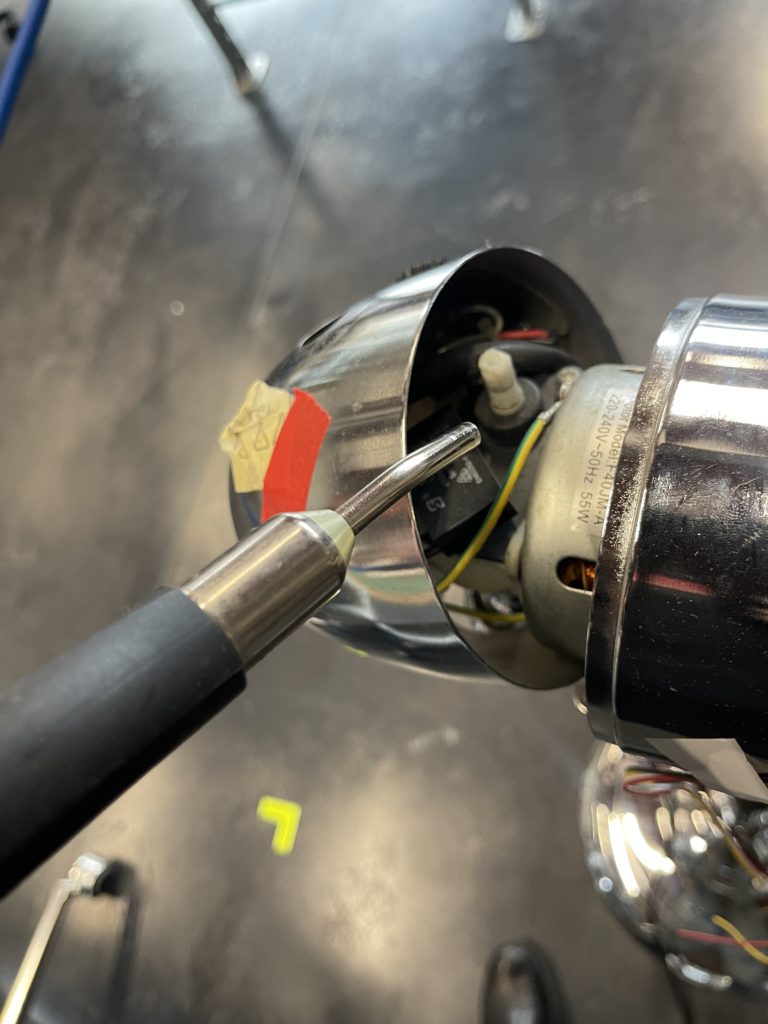
Airgun to clean internal components and identify wires and parts in need of repair
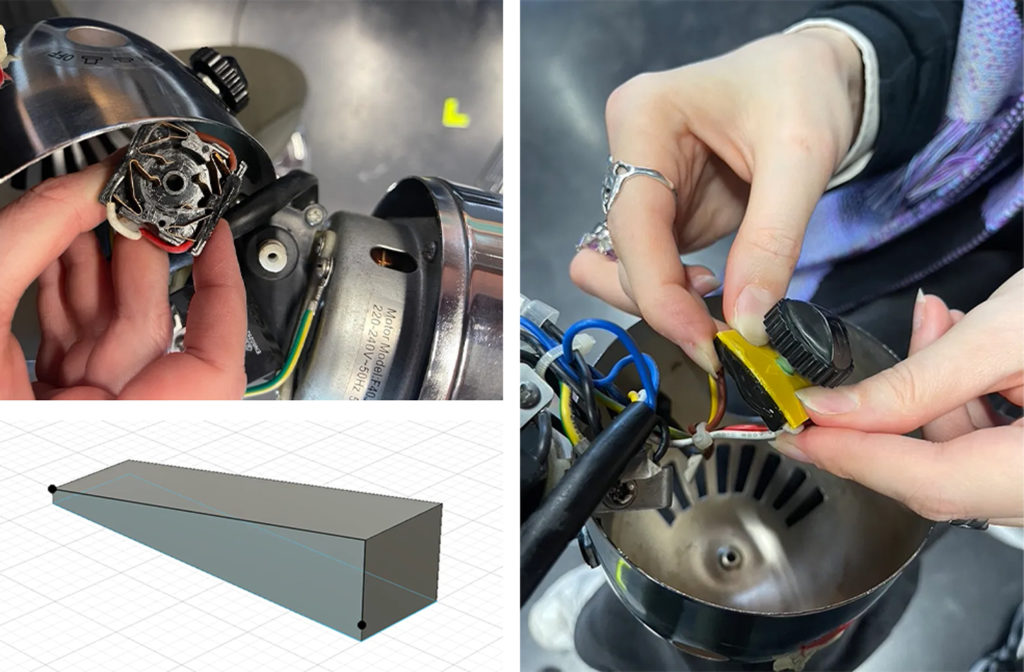
Replacing the broken speed switch plate and printing an angle support
Installation
As shown in these initial sketches, we first imagined the exhibition in a corner, with images on two walls. After some iteration, we decided it would be better to set up the installation in a more open way. It was also important for us to design a flexible installation that could be adapted to different spaces in the future if needed, without being restricted by the need for a corner.
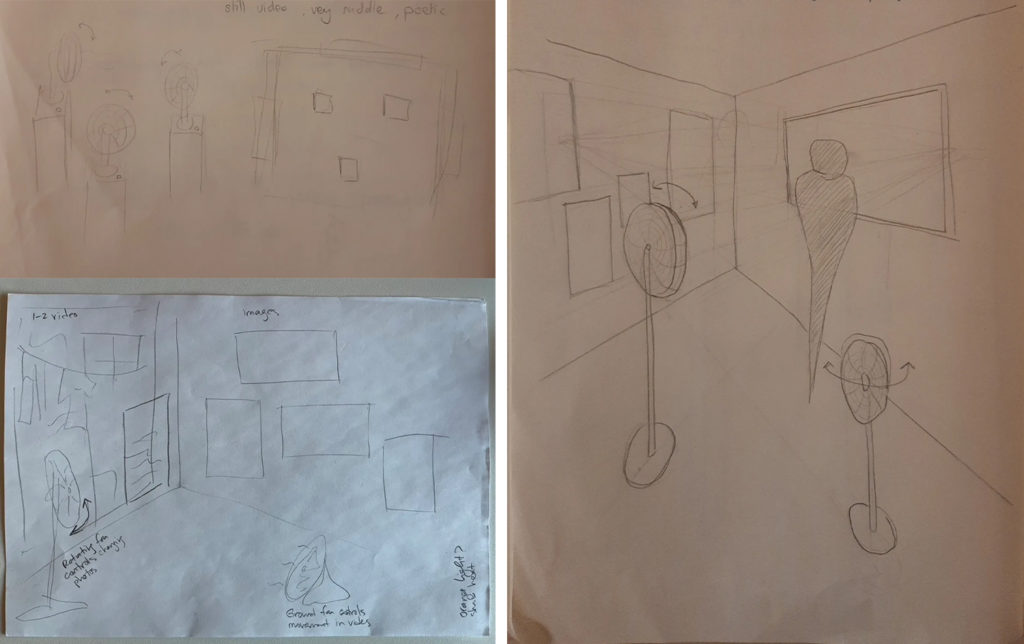
The space and setup
In March 2025, we set up the Calura installation for its first exhibition. Saceba is a former cement factory converted into a multipurpose creative event space in Moriba, Switzerland.
We utilized the large entrance wall to show the projected images side by side, with the fans towards the center, facing the wall. Each fan controls the images in front of it. When the fan oscillation is off, the images also stop changing.
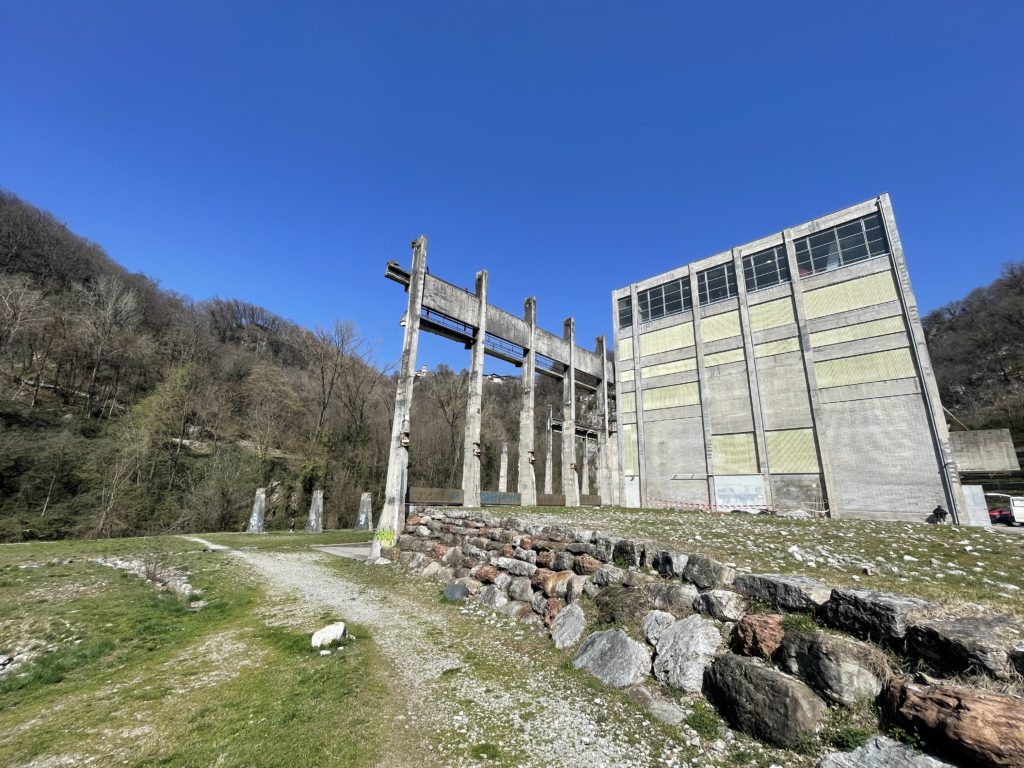
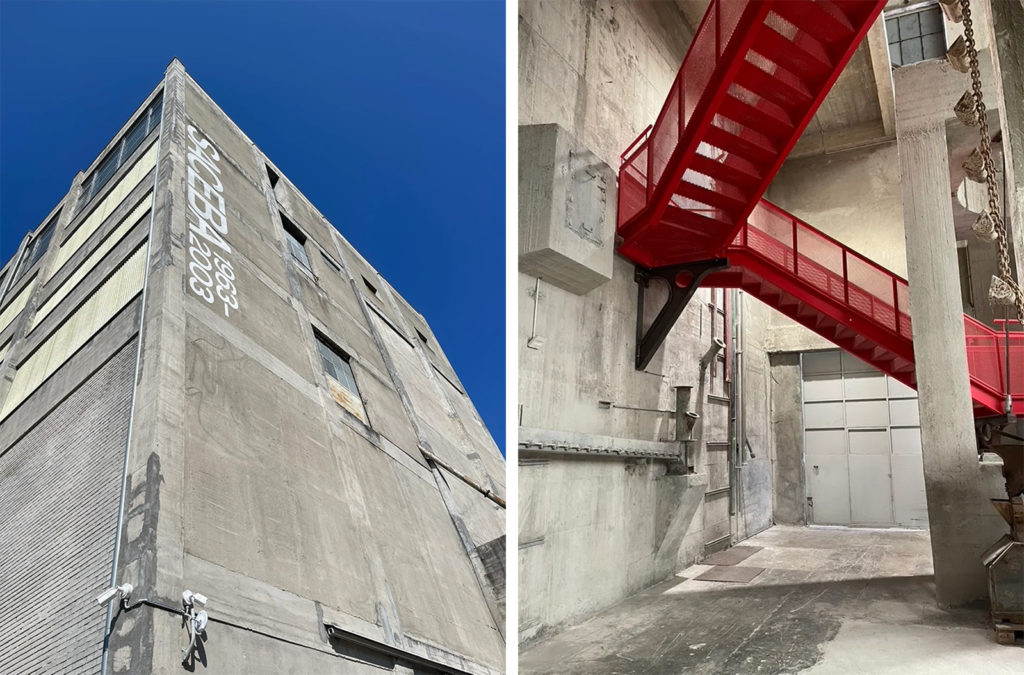
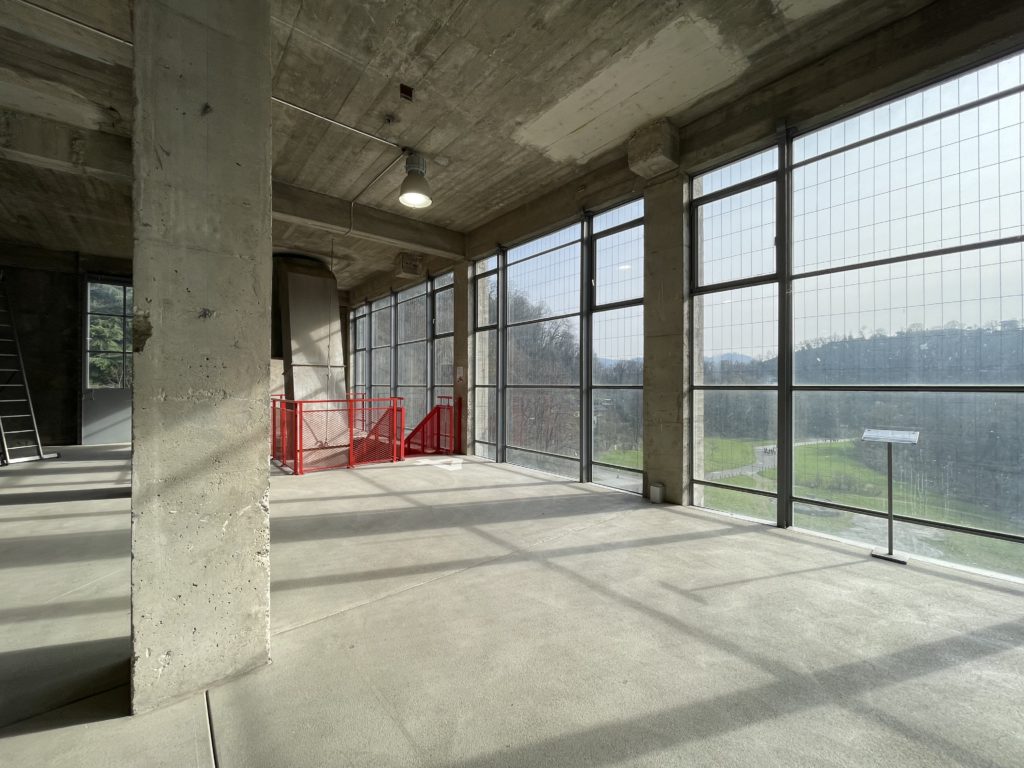

References
Photography style: Martin Parr
Example Parr photos from Huxley-Parlour Gallery
Photo references of Italy in the 1980s: The Way We Were: Italy in the 1980s – italy magazine, 66 Rare Photos of 1980s Italy Reveal The True Meaning of ‘Living La Dolce Vita’ – Bored Panda
Photo collage concept: David Hockney
Songs: Edoardo Vianello – Abbronzatissima (1963), Raffaella Carrà – Pedro (1980), Gino Paoli – Sapore di sale (1963), Al Bano & Romina Power – Felicità (1982), Umberto Tozzi – Gloria (1979), Toto Cutugno – L’italiano (1983), Tony Renis – Quando quando quando (1962), Ricchi E Poveri – Sara Perche Ti Amo (1981)